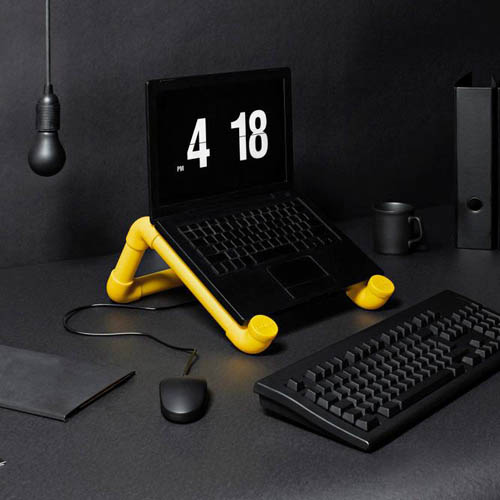A Fly on the Wall - 10 Tips for Wedding Beginners People often ask me if I ‘do weddings’. That’s a funny question for a photographer. Perhaps like asking a chef if he ‘does chicken’. I’m a photographer and I have the ability to photograph anything. Do I base my business solely around weddings? No. Can I do them? Certainly! And I love it.
People often ask me if I ‘do weddings’. That’s a funny question for a photographer. Perhaps like asking a chef if he ‘does chicken’. I’m a photographer and I have the ability to photograph anything. Do I base my business solely around weddings? No. Can I do them? Certainly! And I love it.
I’ve never taken a class on how to photograph weddings or read a book on the topic. I have my own way, my own style and my own rules and my clients are happy with me so I must be doing something right!
As a woman, I really feel at an advantage in the world of wedding photography. Firstly, I can capture the excitement of the bride getting ready in a way a man can’t because, let’s face it, most brides don’t want a man hanging around while they’re getting dressed.
I have also been a bride and I see things in a vastly different way than a man ever could. Having started as a makeup artist, I’ve been involved in many weddings and have watched many-a-photographer sit and drink or flirt with the bridesmaids while precious moments are slipping by un-photographed (like the mom fitting her daughter’s veil).
 Mind you, I have only done a few weddings and I don’t claim to be an expert by any stretch of the imagination. But I do think that I have a few tidbits I can share with anyone who is just starting out or perhaps is a man in the business looking for a little female perspective.
Mind you, I have only done a few weddings and I don’t claim to be an expert by any stretch of the imagination. But I do think that I have a few tidbits I can share with anyone who is just starting out or perhaps is a man in the business looking for a little female perspective.
1. Don’t Manipulate
When the bride is preparing on the morning, don’t get in the way and ask for smiles or stage the dressing. Just be on your toes and try to anticipate what’s next.
Is her hair and makeup finished? She will probably be getting into her dress next. Is she in her dress? Get yourself to the bottom of the stairs to shoot her coming down. There is no time to relax if you’re the photographer!

2. Fill In
If allowed, wander around the house or hotel room and snap photos which can be used to fill-in spaces in the album to create a sense of ambiance and location. I always snap the makeup brushes, dresses hanging up, important things around the home.
If you’re at the bride’s family home, there will be loads of memorable things around the house to photograph. Family photos around the home, her childhood bedroom.
3.Get Alone
Spend a couple minutes alone with the dress, the shoes, the flowers, etc. to take meaningful photographs without anxious people rushing you. There should be plenty of time while you’re there.
But when you’ve got what you need, remember to leave in time to photograph guests arriving at the ceremony and the groom as he waits for his bride.
4. Be Bold
 Don’t be shy in front of the audience. Obviously, use a zoom lens so you’re not hip-to-hip with the priest but be strong and bold and remember that you have a license to be there! You were hired and everyone knows that so don’t worry about moving around and shooting from behind the priest if it’s appropriate.
Don’t be shy in front of the audience. Obviously, use a zoom lens so you’re not hip-to-hip with the priest but be strong and bold and remember that you have a license to be there! You were hired and everyone knows that so don’t worry about moving around and shooting from behind the priest if it’s appropriate.
Editors Note: Check out these Wedding Photography Tips from a Celebrants Perspective.
5. Dress for the Occasion
If you’re a woman, forget wedding protocol and wear trousers! No trying to look pretty. Before I figured that one out, I was holding my skirt down more than I was holding down the shutter. Quiet shoes are a must - you don’t want to be tip toeing around like a criminal.
6. Remember the Others
 When I first started weddings, my clients were friends so I generally knew one side of the family better than the other. It was entirely subconscious, but I realised that in the ceremony, I was gravitating to the people I knew and leaving the others out.
When I first started weddings, my clients were friends so I generally knew one side of the family better than the other. It was entirely subconscious, but I realised that in the ceremony, I was gravitating to the people I knew and leaving the others out.
Find out who is family and make sure to get some images of them as well.
7. Be Bossy
This part is (still) the hardest for me. There are two times I have to throw my weight around: after the ceremony and during family set. I usually take the bride and groom away to a location for 30 minutes of shooting privately and this can be difficult as the guests often form a spontaneous receiving line and kidnap the couple.

c Craig Johnson
Know who is driving you there and make it happen. The bride and groom have told you what they want and although they are often distracted away from their plan on the day, they will thank you after if you make their original plan happen.
For the formal portraits, it can take a precise military operation to execute such an endeavor and this bit still makes my palms sweat! People are anxious to get to the food and dancing and I’m the only thing stopping them! Have a list arranged ahead of time of the specific groups the couple wants otherthan the usual his-family-her-family, him-and-his-guys, her-and-her-girls, etc.
The most important part in making this happen is to have your bossy go-to person who knows everyone (perhaps one of his groomsmen?) to announce all of the family and bridal party to step outside and then have him announce the groups you are needing. You can literally take each shot within 30 seconds if you can gather them and get them to engage with you all at once. Not as simple as it sounds, but it can be done. I just ask everyone to look at me and smile and then take about 10 shots at once. You can use the PhotoShop group merge function to grab all the smiling faces and put them into one photo if necessary.
8. Gear
A few of my thoughts on gear. NEVER use a pop-up flash. Always have an external flash ready to go and never point it directly at your couple. I always point it at the ceiling or a wall. I shoot with two cameras. My main one has a zoom lens and a flash and the other has either a 50mm 1.4 or 85mm 1.4 wide open so no flash is needed.
Be Professional
True story: I once saw a big, sweaty, poorly dressed wedding photographer hawk back a loogie and SPIT on the ground during formal portraits. Absolutely disgraceful!
It can be easy to fall into the fun of a wedding and obviously, you won’t be any good if you’re uptight and not having fun, but if you get too lax and begin socializing, you will miss important moments and you’re basically at work so remember to be professional.
I would even bring my own snack to eat on the sly when you get a chance - I would never accept an invitation to take part in the buffet. Remember that people are watching you and a huge percentage of them are either looking for a wedding photographer or know someone who is so be professional at all times.

c Craig Johnson
10. In My Opinion
I never take posed table shots. I absolutely h.a.t.e. it when the photographer comes around, interrupts your meal, wine or conversation and forces everyone to squeeze their head into the middle of the table for a photo. What on earth would the couple ever do with that photo? Certainly, it’s good to make a record of everyone who was there and you can do that without being intrusive and even do it in a beautiful way.
But - and this is just my humble opinion - the photographer can easily lose guests’ feeling of ease and comfort the instant he/she becomes intrusive. Make yourself invisible!
I really love photographing weddings. It is HARD work and I actually ache for a couple days after. Bring an assistant who can help you (that’s a bonus tip!) and get a good night’s rest beforehand. Have a blast and be confident - the bride and groom already love your talent because they hired you in the first place. So be secure in that fact and own it!
Post from: Digital Photography School - Photography Tips.
A Fly on the Wall - 10 Tips for Wedding Beginners
 Windows: LAlarm uses the USB port or power port of your Laptop as a sensor to detect when your laptop has been disturbed.
Windows: LAlarm uses the USB port or power port of your Laptop as a sensor to detect when your laptop has been disturbed. People often ask me if I ‘do weddings’. That’s a funny question for a photographer. Perhaps like asking a chef if he ‘does chicken’. I’m a photographer and I have the ability to photograph anything. Do I base my business solely around weddings? No. Can I do them? Certainly! And I love it.
People often ask me if I ‘do weddings’. That’s a funny question for a photographer. Perhaps like asking a chef if he ‘does chicken’. I’m a photographer and I have the ability to photograph anything. Do I base my business solely around weddings? No. Can I do them? Certainly! And I love it.  Mind you, I have only done a few weddings and I don’t claim to be an expert by any stretch of the imagination. But I do think that I have a few tidbits I can share with anyone who is just starting out or perhaps is a man in the business looking for a little female perspective.
Mind you, I have only done a few weddings and I don’t claim to be an expert by any stretch of the imagination. But I do think that I have a few tidbits I can share with anyone who is just starting out or perhaps is a man in the business looking for a little female perspective.
 Don’t be shy in front of the audience. Obviously, use a zoom lens so you’re not hip-to-hip with the priest but be strong and bold and remember that you have a license to be there! You were hired and everyone knows that so don’t worry about moving around and shooting from behind the priest if it’s appropriate.
Don’t be shy in front of the audience. Obviously, use a zoom lens so you’re not hip-to-hip with the priest but be strong and bold and remember that you have a license to be there! You were hired and everyone knows that so don’t worry about moving around and shooting from behind the priest if it’s appropriate. When I first started weddings, my clients were friends so I generally knew one side of the family better than the other. It was entirely subconscious, but I realised that in the ceremony, I was gravitating to the people I knew and leaving the others out.
When I first started weddings, my clients were friends so I generally knew one side of the family better than the other. It was entirely subconscious, but I realised that in the ceremony, I was gravitating to the people I knew and leaving the others out. 





 If you wanted to add Firefox to your system, simply search for it in the search bar farther down the page. Results from the repositories you've chosen appear, and you can click "Add+" to load them into your system, with dependencies and other needed packages automatically included. What if you don't see something you know runs on Linux—like, say, Google Chrome? Find an RPM-formatted package, like those I found at
If you wanted to add Firefox to your system, simply search for it in the search bar farther down the page. Results from the repositories you've chosen appear, and you can click "Add+" to load them into your system, with dependencies and other needed packages automatically included. What if you don't see something you know runs on Linux—like, say, Google Chrome? Find an RPM-formatted package, like those I found at 
 The 'Build' section is where you get the good stuff. Pick the format you'd like to download, whether an ISO for creating a CD/DVD, a disk image for hard disk or USB transfer, or a ready-made virtual machine file for VirtualBox or VMWare. Choose your format, set a version number, and that build will always be available for downloading or 'cloning.' Not quite sure what to do with the files you received? Here's SUSE Studio's guide to
The 'Build' section is where you get the good stuff. Pick the format you'd like to download, whether an ISO for creating a CD/DVD, a disk image for hard disk or USB transfer, or a ready-made virtual machine file for VirtualBox or VMWare. Choose your format, set a version number, and that build will always be available for downloading or 'cloning.' Not quite sure what to do with the files you received? Here's SUSE Studio's guide to 

 USB-powered desktop gadgets can be fun, and sometimes useful, but they're often priced at not-so-fun prices. Learn how to splice a USB cable to power simple gadgets with MaximumPC's guide.
USB-powered desktop gadgets can be fun, and sometimes useful, but they're often priced at not-so-fun prices. Learn how to splice a USB cable to power simple gadgets with MaximumPC's guide.
















 Behold, the B&W Zeppelin Mini, just about the most promising station for your song chucker since, well, the
Behold, the B&W Zeppelin Mini, just about the most promising station for your song chucker since, well, the  iPhone owners, have you bumped yourself up to
iPhone owners, have you bumped yourself up to  For years, one of the biggest complaints about iTunes has been its inability to automatically add new music to your library from a watched folder. As of
For years, one of the biggest complaints about iTunes has been its inability to automatically add new music to your library from a watched folder. As of  So you've decided to get into shape. Before you put on your running shoes or hit the gym, it may be worth knowing just how out of shape you are—you know for motivation. The Marine Corps Fitness test can help.
So you've decided to get into shape. Before you put on your running shoes or hit the gym, it may be worth knowing just how out of shape you are—you know for motivation. The Marine Corps Fitness test can help.
 If you're really serious about security, you've already learned how to choose
If you're really serious about security, you've already learned how to choose  The Pidgin multi-protocol IM client not only works on both Windows and Linux, but the profile directory can be synchronized across both operating systems with Dropbox and a little symlink trickery. The basic idea is that we'll move the profile folder into our Dropbox folder, and then create a symlink from where the original used to be so Pidgin won't even know you moved it.
The Pidgin multi-protocol IM client not only works on both Windows and Linux, but the profile directory can be synchronized across both operating systems with Dropbox and a little symlink trickery. The basic idea is that we'll move the profile folder into our Dropbox folder, and then create a symlink from where the original used to be so Pidgin won't even know you moved it. These days, almost every application has a portable version for use on a thumb drive, but what you may not have known is that your portable applications work perfectly when you add them to your Dropbox folder and synchronize them across all of your machines. You've already shared your
These days, almost every application has a portable version for use on a thumb drive, but what you may not have known is that your portable applications work perfectly when you add them to your Dropbox folder and synchronize them across all of your machines. You've already shared your  Dropbox is designed to simply sync files and folders, but you can use it to trigger other tasks by simply adding files to Dropbox in a particular folder and monitoring that folder on another computer. For instance, most popular BitTorrent applications include a folder-monitoring feature that checks for and automatically opens new torrent files in a user-specified folder, meaning you can easily
Dropbox is designed to simply sync files and folders, but you can use it to trigger other tasks by simply adding files to Dropbox in a particular folder and monitoring that folder on another computer. For instance, most popular BitTorrent applications include a folder-monitoring feature that checks for and automatically opens new torrent files in a user-specified folder, meaning you can easily 




 Where the method I covered
Where the method I covered